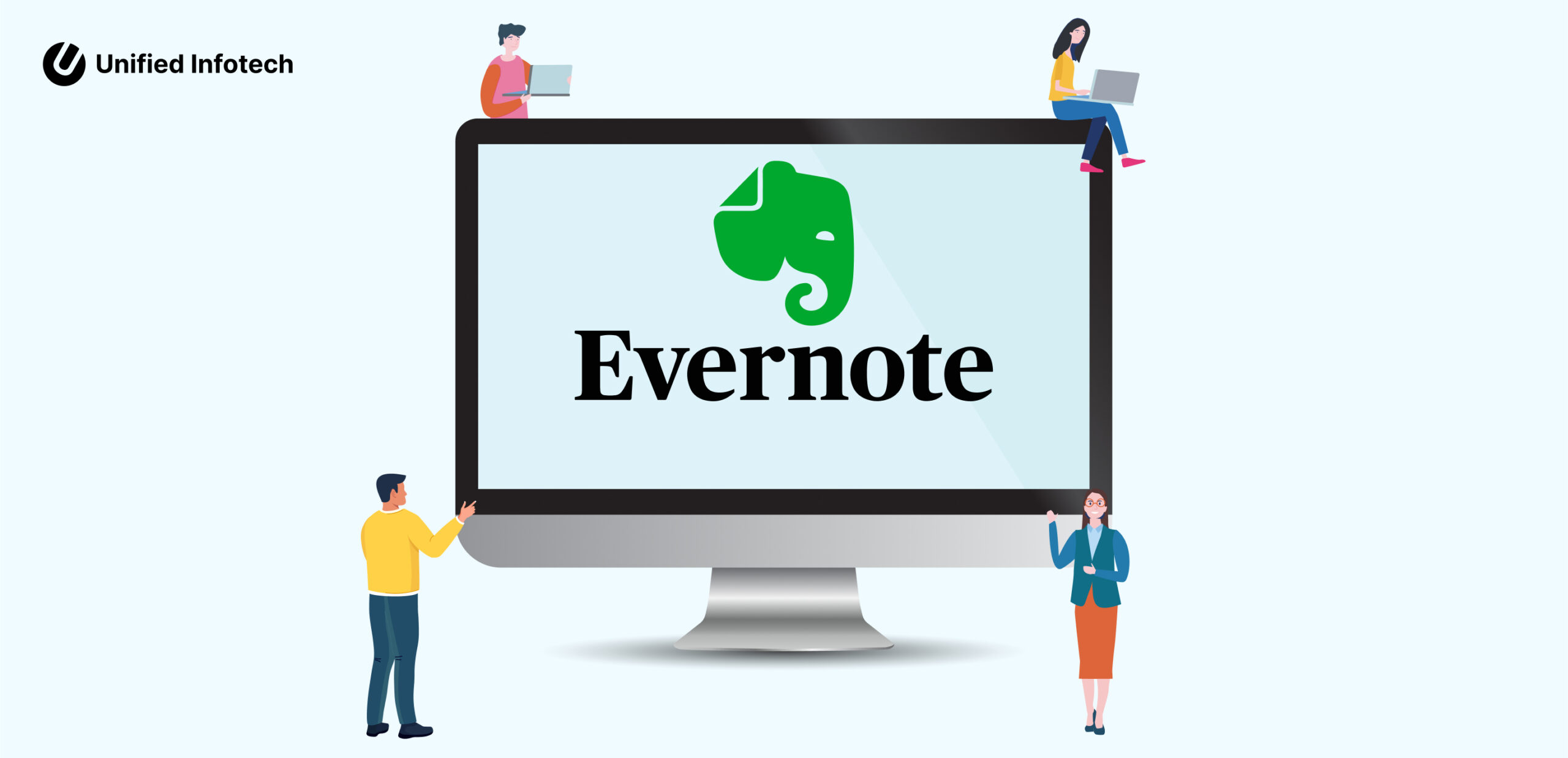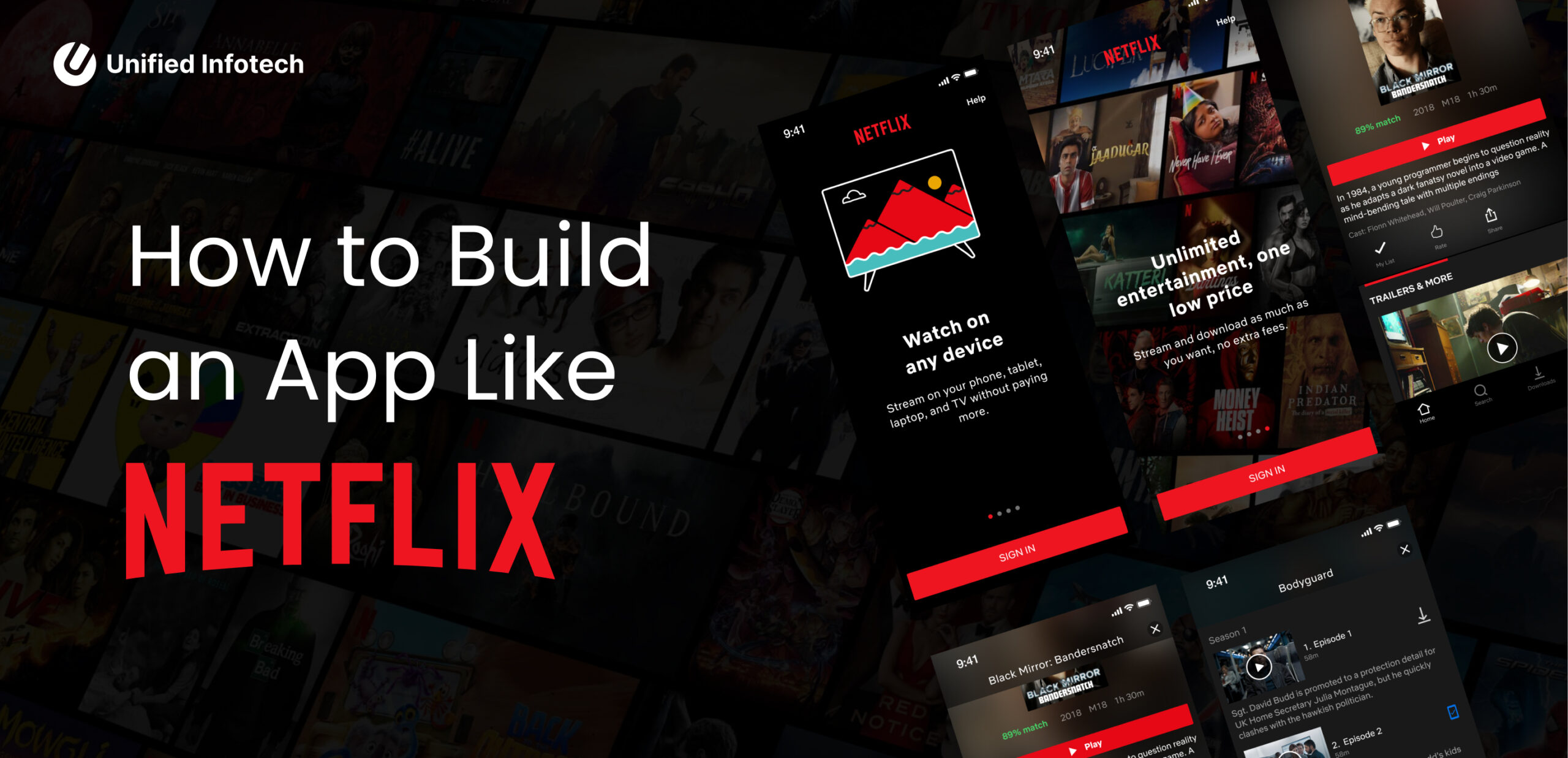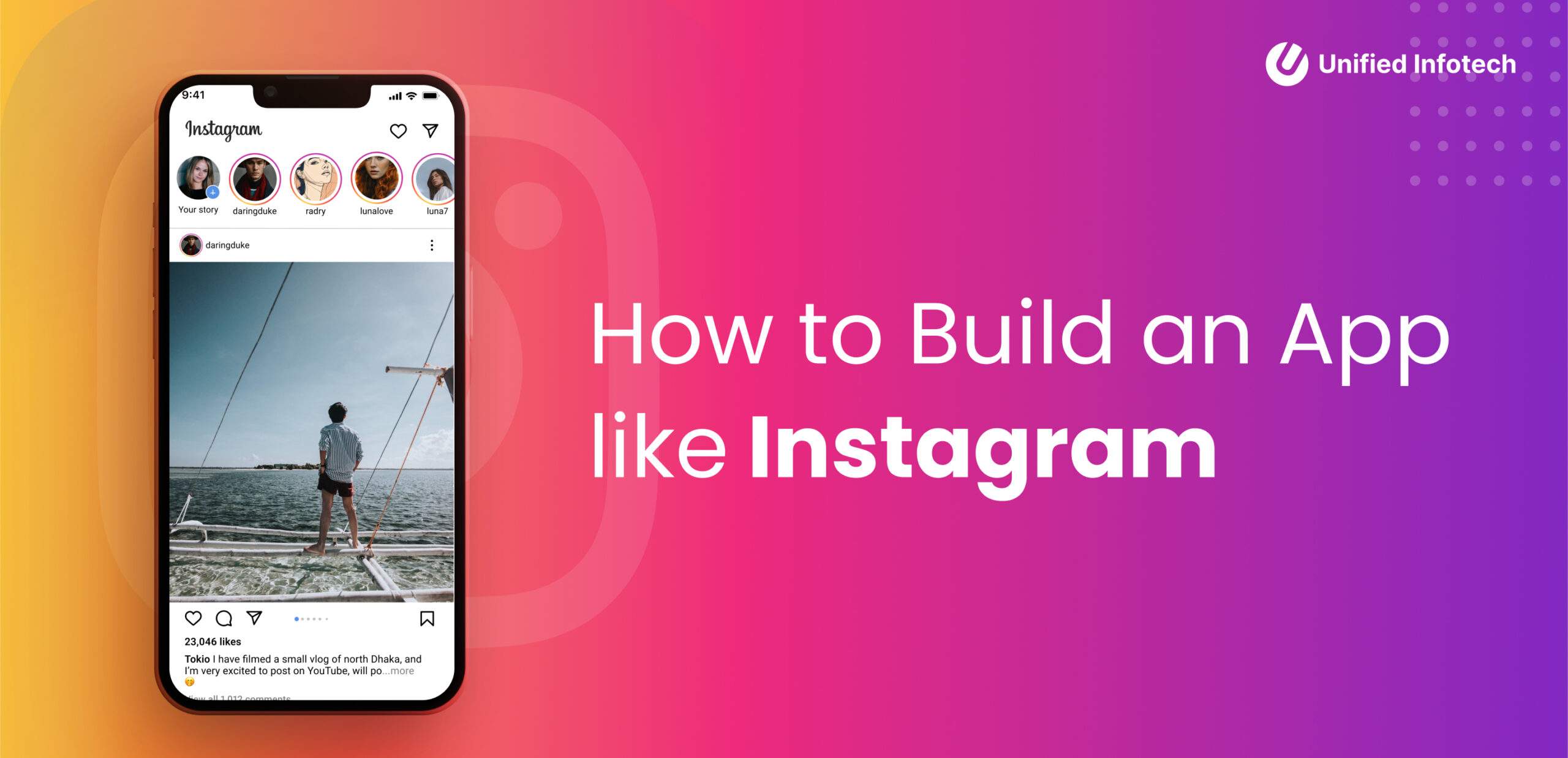
Site Search
How to Build a Note-Taking App Like Evernote?

Table of contents

Let's talk
Reach out, we'd love to hear from you!
Valued at USD 15.4 billion in 2024 and expected to grow from USD 17.18 billion in 2025 to a staggering USD 44.51 billion in 2034, the global note-taking app market is nothing short of booming. Growing at a CAGR of 11.15%, the opportunities seem endless and if there’s ever been a time to build your digital note-taking app, it’s now! (source)
Since its inception, mobile devices have reduced the human labor involved in daily tasks, like remembering phone numbers, postal codes and important information regarding people or work. Among all the other productivity tools, digital notebook apps gained significant interest among users, helping them organize and remember tasks, information and thoughts easily
– be it a grocery list, business plans, weekend to-dos, a song, a recipe or practically anything else.
Within this segment, note-taking apps like Evernote have emerged as top contenders for their users. With its clean and intuitive interface, powerful features and functionalities, cross-platform compatibility and user-centric innovation, Evernote stands as the benchmark of digital note-taking apps. Evernote users trust the app to remember sensitive information and useful data due to its simplicity and accessibility.
With growing times, the need and demand for these note-taking apps have risen significantly. If you are trying to build a note-taking app like Evernote, you are at the right spot!
Read along this comprehensive guide to understand what it takes to build an app like Evernote, followed by a 9-step guide on how to build one, from planning to launching your app.
What is Evernote? What are Its Key Features?
Before building an app like Evernote, it is crucial to understand what it’s made of, the features and functionalities, what makes it successful and what the projected growth is. With these requisites in place, companies can carve their product roadmap efficiently to build digital note-taking apps like Evernote.
Currently valued at around USD 1 billion, Evernote is one of the most popular and widely used digital note-taking apps in the global market, with over 225 million users as of 2025 (source). It is a smart and intuitive note-taking app that allows users to capture a ton of digital information as text, photos, videos, audio notes, etc., from any device, organize them using tags and notebooks and search notes within the app. Available for both iOS and Android, Evernote offers a powerful text editor with formatting features, multimedia compatibility, OCR abilities, tagging systems and cross-platform sync.
Below is a list of the core note-taking app features that any digital notebook app must have.
- Note Creation: Ability to create rich-text notes and annotations with formatting and font options, checkboxes, bullet and numbered lists, images, stickers, and attachments.
- Search: Dynamic search functionality compatible with text, images and text within images using OCR.
- Organized Information: Available elements like notebooks/work boards, tags, colors and filters to help users segregate and categorize notes and easily retrieve when needed.
- Multiple Device Sync: Cross-platform note-taking apps, allowing seamless information sync across multiple devices, including mobile, wearables, desktop and web apps.
- Offline Access: User access to notes even in offline mode and no connectivity.
- Inter-team and Intra-team Collaboration: Ability for users to share notes, workbooks and information internally and externally with others.
- Security: Two-factor authentication, end-to-end encryption, password protection, secure cloud storage, etc., to be implemented.
But What Makes Evernote Successful?
- What works for Evernote primarily is its freemium model and the user delight it offers. It has strategically put the needs of its users first and delivered accordingly, retaining long-term users.
- Evernote offers a set of flexible and robust features that truly make note-taking a breeze for diverse workflows. It is compatible with rich-text notes, OCRs, document scans, web clippers, email integration and audio notes in mobile apps, which makes everything easier.
- Evernote’s integration of analog-digital data using Moleskine notebooks helped developers bridge two worlds and establish brand loyalty and usefulness.
- Evernote is known for its cross-platform compatibility and works seamlessly on any logged-in device. It boasts strong offline capabilities that help users access and edit notes on the go, anywhere, anytime.
Because of this, Evernote witnesses a whopping 8 million notes generated every year, with more than 20,000 organizations using it on a daily basis.
A 9-step Guide to Building Digital Note-Taking Apps Like Evernote
Step 1: Market Research, Planning and Strategies
Before initiating any note-taking app development, thorough market research and planning are required. It is important for companies to understand the requirements and preferences of the audience they want to target.
Identifying these, along with the core features, enables organizations to build a clean and progressive roadmap for the future. It can also bring forth potential gaps in the current app and developers can find ways to better it.
Key steps in the market research process include:
- Market surveys, interviews and meetups with potential customers to analyze their top needs
- Top competitor research, e.g., Google Keep, OneNote, Notion
- Unique Selling Point (USP) establishment
- User persona creation with user journey mapping
Step 2: The Right Tech Stack
To successfully proceed with the note-taking app development, choosing the right technologies is of utmost importance –
This stack will define the scalability, maintenance and performance of the app.
Compatibility across technologies will ensure a smoother user experience and reduce friction. Below is a suggested tech stack for a note-taking app like Evernote:
Step 3: UI/UX Designing
Ever thought about how your users would react to your note-taking app if it looked nothing like one?
Establishing user experience and resonance is the key contributor to the success of any mobile app. A clean and smart user interface allows for enhanced user engagement and defines the app in its own unique way. Apps like Evernote follow specific design guidelines to achieve robust and acceptable UI/UX designs that not only attract but also retain.
After all, users should feel at home when they try to list something down rather than succumb to a new app.
Some key design principles for note-taking app development are:
- Minimalist Design: Focus more on content and conversion than design and iteration
- Easy Navigation: Provide upfront navigation tools, search bar, sidebars and tab-based navigation
- Clean Typography: Ensure enough spaces between elements and easily accessible and readable text.
- Quick Actions: Add, share, delete, edit and tag notes and notebooks in a click.
- Responsiveness: Ensure app responsiveness and smooth user experience across multiple devices
App developers can create wireframes, mockups and prototypes to validate the design externally and internally. Tools like Figma, Sketch and Adobe XD can be of great help for designing a surreal UI.
Step 4: Backend Development
Backend development is where design meets code. Being under the hood, the backend development is what lays the foundation stone in any app development.
Also called the server-side, the backend handles all data processing, storage, authentication and core business logic. It is what makes the app run seamlessly even under a great surge or overwhelming data load. Load balancing and auto-scaling are often implemented to enable the app to handle huge volumes of data from multiple users simultaneously.
Key responsibilities of the backend development process for a note-taking app like Evernote include:
- User authentication and authorization using OAuth or JWT
- Create, Read, Update, Delete (CRUD) operations
- Media upload and cloud storage integration
- End-to-end encryption
- Real-time sync via Firebase or WebSockets
Step 5: Frontend Development
Frontend refers to the visual interface and whatever a user sees and interacts with on an app.
It is the attire and face value of how a web app looks and functions.
While backend developers focus on making the app more robust and reliable from the server end, frontend developers focus on making the usability and engagement on the app more real and relatable by using components like buttons, checkboxes, listing items, colors, tags, flags, sharing options, and other interactive features.
For note-taking apps like Evernote, the frontend is a deal-maker or breaker, depending on how users respond to the offerings and UI.
Frontend app developers can use React to create interactive and dynamic user interfaces for note-taking apps based on style, preferences and affinity – the possibilities are endless.
Below are some of the key components for building an app like Evernote:

Step 6: Core Features Implementation
Once your backend and frontend development stack is ready, technologies and UI/UX designs sorted, it is time to finalize the core features for a note-taking app like Evernote. Gather your developers and create a roadmap for the development process. Below is a table showing how to approach and implement each essential feature:
Step 7: App Testing and QA
App testing ensures proper feedback and checks on the features and functionalities. Think of it as a test lap before an actual F1 Grand Prix. This testing makes sure your note-taking app works seamlessly across devices and scenarios.
Testing and QA have many aspects to them. However, for apps like Evernote, below is a table that lists the primary types of app testing.
Establishing a CI/CD pipeline can be beneficial in automating testing processes, allowing issue flagging early in the development cycle.
Step 8: Deployment and App Launch
Congratulations! You have successfully built an app like Evernote. Now its time to bring it to the world.
Once your note-taking app development and testing is done, and you are confident with the app functionalities, it is time to launch the app in the market.
Companies can start with a beta version to collect feedback and act on them, before doing a full-blown launch. It is advised to implement A/B testing in the app for new features and use data analytics to study the trends and user preferences. This data can further be used by developers to refine app features and iterate based on usage patterns.
Key steps in deploying your newly developed note-taking app:
- Host the frontend
- Deploy the backend on AWS
- Use data management software to secure and allocate resources
- Set up CDN and caching
Step 9: Post-launch Support and Feedback
Launching the app is not the end; it is the beginning.
Companies must understand that for note-taking apps like Evernote, app launch is just the primary touchbase; as users use the app on an everyday basis, the real work begins after user adoption, where continuous support, keen monitoring and intermittent enhancements play a big role.
To gain long-term success from your app development and launch, these post-launch efforts are needed to identify gaps, eliminate bugs, understand user behavior and trends, learn about user requirements and accordingly elevate your app based on real-world data.
Aspiring companies in this domain must implement:
- Live/AI chatbox and helpdesk integration for customer queries
- Feedback forms and survey sheets for user insight and preferences
- In-app Analytics for user behavior tracking
- Regular and consistent updates based on real user input.
What Is The Cost to Build an App Like Evernote
When building note-taking apps like Evernote, the cost of developing a digital notebook app varies depending on several factors. Business owners and developers will need to consider the selected features that are to be implemented, the complexity of the app, its design and content, the platform on which the app will be developed, the allocated tech stack, and the development model (in-house or outsourced) to accurately determine the cost and budget for building an Evernote-like app.
There are, however, tiers to the cost when it comes to digital notebook app development. Features like rich-text editor, OCR scans, offline mode, AI tags and cloud sync are bound to increase the development costs manifold. This is where partnering with pioneer app development companies like Unified Infotech can help you – ensure performance, clarity and scalability in no time. Below is a rough estimate of the cost range of Evernote-like app development:
| App Complexity | Estimated Cost Range |
| Basic MVP | $20,000 – $40,000 |
| Mid-level App | $50,000 – $100,000 |
| Feature-rich App / Enterprise App | $120,000 and above |
How Can We Embed AI Features in an Evernote Clone App?
Artificial Intelligence has changed the game of online note-taking apps. From new features to cool superpowers, AI introduction in the digital notebook landscape has brought forward new expectations and needs of the users. Below are some smart ways companies can embed AI in their note-taking app:
- AI-recommended Smart Search: Enable NLPs to allow users to search notes by their meanings and definitions, rather than particular keywords.
- AI-powered Speech-to-Text Translation: Develop features that seamlessly convert audio notes and recordings into editable and shareable text.
- Auto-tagging and AI-enabled Categorization: Allow notes to be auto-tagged and categorized with labels based on content theme and context with the power of AI.
- Reminders and Nudges: Allow your app to suggest AI-powered insights on when to revisit a note or create follow-ups based on due dates and usage patterns.
- AI-powered Summarization: Employ AI tools to generate Too Long, Didn’t Read texts and quickly summarize long notes, intricate information and MoMs.
Companies interested in building digital note-taking apps like Evernote can use APIs from OpenAI, Google Cloud and AWS to build preferred language models for their app, or develop their own custom model that offers more control and authority over the application and its features. These AI features within the app not only enhance the UX of the platform but also add customer retention and a competitive advantage into play.
Read more: AI in Web Design
How Much Time Will It Take To Build A Note-taking App Like Evernote?
Just like the cost, the time taken to build an app like Evernote varies substantially, generally depending on the scope, app complexity and resource availability. For example, if you are planning to launch a lean MVP with core features, development is achievable in 10-12 weeks; whereas a feature-rich, full-blown note-taking app with collab tools and AI integration might take anywhere from 6 months to a year.
Plan for iterative development, agile processes and modular approaches to enable faster time-to-market, concept validations and confident scalability.
Below is a general timeline breakdown for note-taking app development:
| Phase | Time Estimate |
| Research and Planning | 2-3 Weeks |
| UI/UX Design | 3-4 Weeks |
| MVP Development | 2-3 Months |
| Full-feature Development | 6-12 Months |
| Testing and QA | 3-4 Weeks |
| Deployment and Feedback | 2-3 Weeks |
Bonus Info! How to Monetize a Digital Notebook App Like Evernote
- Offer a Freemium model, where basic features are free and advanced features are in the premium tier.
- Enable in-app purchases for separate features individually, like themes, fonts, OCR, etc.
- Establish a solid subscription plan for cloud storage, 24/7 support, and tools.
- Allow non-intrusive sponsored content and ads for free plan users.
- Implement enterprise licensing where you offer your app with team plans for businesses.
Final Thoughts
Building a note-taking app like Evernote is a rewarding but complex project. It requires the right mix of user-centric design, robust backend architecture, and innovative features to stand out in a crowded market. By following this guide, from ideation to launch, you’ll be well-equipped to create an app that not only competes with industry giants but also delivers genuine value to your users.
Unified Infotech is a pioneer in mobile app development, and over the 15 years has helped numerous organizations bring their vision into reality. Whether you’re an indie developer or a tech startup, now is a great time to tap into the growing demand for digital productivity tools. We at Unified are here to help you ideate and develop your desired app with ease.
Remember, the most successful apps are the ones that evolve continuously based on user needs and feedback.
Frequently Asked Questions (FAQs)
Is Evernote still relevant or obsolete?
Evernote is still relevant, but with a shifted market positioning, required especially by users needing advanced organization and search, OCR capabilities, multi-device sync and detailed note structure. Newer apps like Notion, OneNote and Obsidian have drawn more users since they offer more modern UX and generous free plans, making the competition tougher.
Is there an app like Evernote but free?
Yes, there are several apps like Evernote that are free to use and offer similar features and functionalities. Google Keep, Notion, Joplin and Obsidian are some popular free alternatives to Evernote.
However, if you are not satisfied with any of the free platforms, Unified Infiotech can help you build a scalable, user-centric custom note-taking app tailored to your users.
Should I design an app like Evernote or OneNote?
That direction and discretion lie with you, your chosen target audience and the pain point you are addressing!
Both platforms are excellent at what they do - Evernote is ideal for structured notes, organized notebooks, advanced search, tagging and a clean interface; OneNote excels in freeform notes, providing more visual freedom from traditional note-taking and deep Microsoft integration.
For you, the best approach can be to amalgamate the strengths of the two platforms and build your own. Connect with us to analyze the note-taking app landscape, identify key pointers and develop bespoke user experiences, combining robust functionalities with utility and user satisfaction.
What are the key features needed to replicate Evernote?
Core features to build an app like Evernote include:
- Rich-text Editor
- Powerful, AI-powered Search
- Organizational Tools
- Multi-device Sync
- Offline Mode
- Notebooks and Tagging
- OCR and Full Text Search
- Collaboration Tools
- Reminders and To-dos
- End-to-end Encryption
How do low-code/no-code platforms simplify building a note app like Evernote?
Low-code/no-code platforms are proven to speed up the MVP development process with components like drag-and-drop builders and built-in logic - no need to write code to develop features within the note-taking app. They offer benefits like:
- Faster prototyping and iteration
- Reduced development cost
- Visual UI builders for easy customization
- Built-in authentication and database connectors
However, for full control, scalability, and performance of your app, custom development is a more sustainable choice for the long run. Here’s where Unified Infotech can be your partner - we can help you start quickly, employ swift development processes and scale perpetually with a growing user base with a custom-built architecture.
What technology stack should be used to develop a note-taking app?
To build a scalable and high-performance note-taking app, a modern tech stack as below is recommended:
- Frontend: ReactJS or Vue.js (for dynamic UI)
- Backend: Node.js, Python (Django/FastAPI), or Ruby on Rails
- Database: PostgreSQL or MongoDB for storing notes and user data
- Cloud & Storage: AWS, Google Cloud, or Azure for file storage, syncing, and deployment
- Authentication: OAuth, JWT for secure login
Real-Time Features: Firebase or Socket.IO for live collaboration or syncing
How can I ensure the security and privacy of user data in the note organizer app?
Data security and privacy are crucial for any note-taking app. Below are some ways to ensure data encryption and security:
- Use end-to-end encryption for note storage and syncing
- Enable two-factor authentication (2FA)
- Store passwords securely using bcrypt hashing
- Implement role-based access controls
- Regularly perform penetration testing and data backups
- Ensure GDPR/CCPA compliance for global users
What challenges should I consider when developing a note-taking app like Evernote?
When building a note-taking app like Evernote, always be prepared for:
- Data Sync Across Devices: Ensure real-time and offline access
- Scalability: Handle large volumes of notes, files, and users
- User Experience: Ability to design intuitive layouts that don’t overwhelm
- Security & Compliance: Protect sensitive personal data
- Media Storage Optimization: Manage and optimize large media files like images, audio, and PDFs


